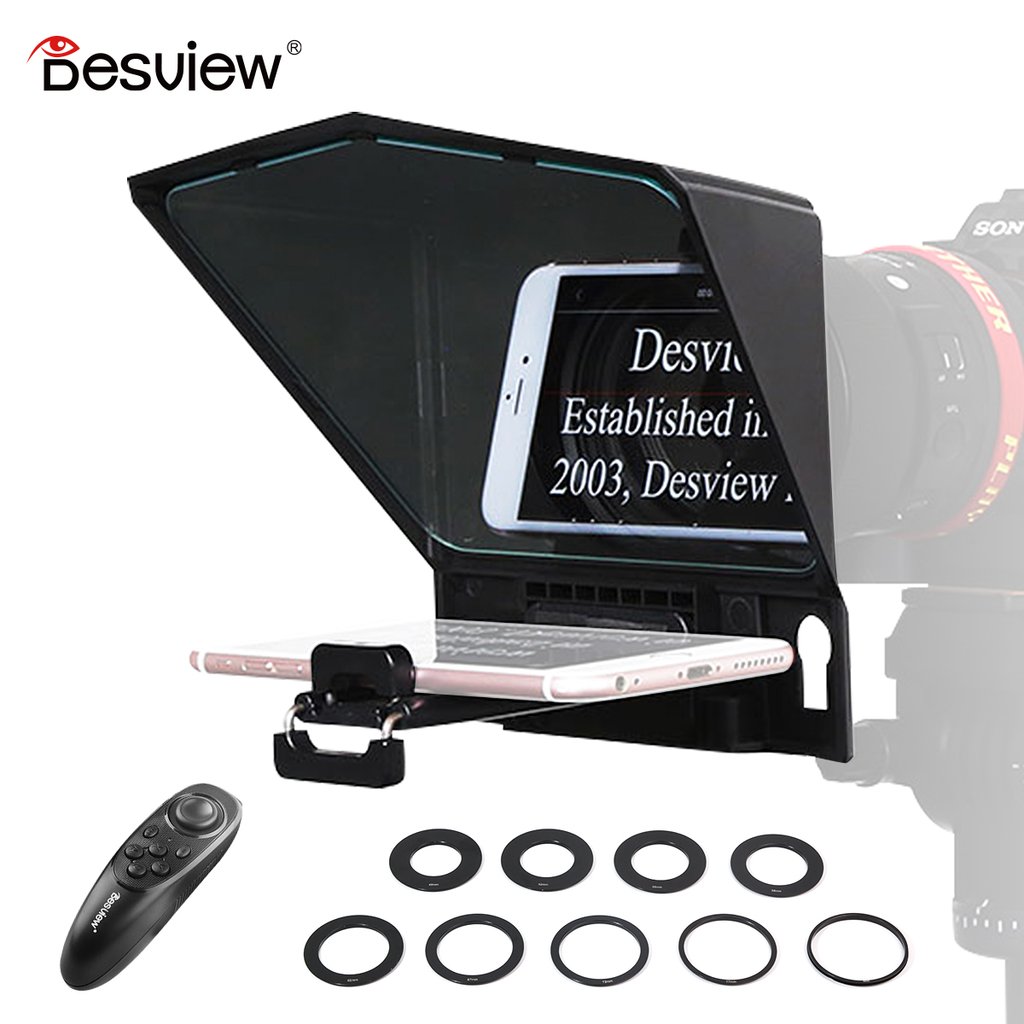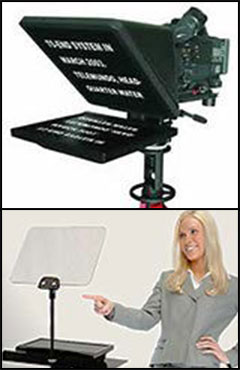

- TELEPROMPTER DEFINITION SERIAL
- TELEPROMPTER DEFINITION SOFTWARE
- TELEPROMPTER DEFINITION PROFESSIONAL
With the development of inexpensive teleprompter software applications as well as free web-based teleprompter applets, many different disciplines are now using teleprompters to help them deliver sermons, deliver speeches, and to create quality audios. Difficult words (mainly international names) are spelled out phonetically, as are other particulars like "Nine-eleven" (to specify that the event 9/11 should not be pronounced "nine-one-one", for example). The text is usually displayed in white letters on a black background for the best readability, while cues are in inverse video ( black on white).
TELEPROMPTER DEFINITION SERIAL
A peripheral device attached to the serial port has a knob that can be turned to speed up, slow down, or even reverse the scrolling of the text. The monitors are often black-and-white monochrome and have the scanning reversed to compensate for the reflection of the mirror.
TELEPROMPTER DEFINITION PROFESSIONAL
Modern teleprompters for news programs consist of a personal computer, connected to video monitors on each professional video camera. The voice-activated prompter simply scrolled at the speed of the presenter's speech. With its partner Sysmedia, Autoscript developed a prompter that required no peripheral to control the scroll of the prompter. However, in 2005, Autoscript improved upon the concept and introduced Voice Activated Prompting.

In 2001, QTV pioneered voice controlled prompting. They also were first to introduce high-brightness monitors, enabling prompters to be used in direct sunlight. This enabled significantly less weight on the camera and improved portability. In the mid-1990s, QTV (a US-based company, now part of the Autocue Group) pioneered use of TFT-LCD monitors with its award-winning "FDP-9", rather than the traditional CRTs. First used by Lucille Ball and Desi Arnaz in 1953 to read commercials on-camera, it soon became a staple for television news.Īs late as 1992, The Tonight Show Starring Johnny Carson was still using an early mechanical teleprompter. Jess Oppenheimer, producer-head writer of I Love Lucy, claimed credit for the original concept of the "in-the-lens" teleprompter and was awarded U.S. In January 2010 Compu=Prompt received a Technology and Engineering Emmy Award for "Pioneering Development in Electronic Prompting". Other paper-based teleprompting companies – Electronic Script Prompting, QTV and Telescript – followed suit and developed their own software several years later, when computers with enough graphics power to provide the smooth scrolling text became available. Their company later became ProPrompt, Inc., which is still providing teleprompting services over 28 years later. The custom software and specially-redesigned camera hardware ran on the Atari 800 Personal Computer, which featured liquid smooth hardware-assisted scrolling.

It was invented and marketed by Courtney M. The first personal computer–based teleprompter, Compu=Prompt, appeared in 1982. Newsreels of Johnson's predecessors depict them frequently looking down at written words as they communicate with their audience. President to use a teleprompter for speeches. In 1952, former President Herbert Hoover used a Schlafly-designed teleprompter to address the Republican National Convention in Chicago. The script was printed on a paper scroll, which was advanced as the performer read. It was simply a mechanical device, operated by a hidden technician, located near the camera. Schlafly built the first teleprompter in 1950. Barton was an actor who suggested the concept of the teleprompter as a means of assisting television performers who had to memorize large amounts of material in a short time. The TelePrompTer Corporation was founded in the 1950s by Fred Barton, Jr., Hubert Schlafly and Irving Berlin Kahn. President Lyndon Johnson uses a teleprompter while announcing the Civil Rights Act of 1964. Cue cards, on the other hand, will always be placed away from the lens axis, making the speaker look at a point beside the camera, which leaves an impression of distraction. Light from the performer passes through the front side of the glass into the lens, while a shroud surrounding the lens and the back side of the glass prevents unwanted light from reflecting into the lens.Īs the speaker does not need to look down to consult written notes, he or she appears to have memorized the speech or be speaking spontaneously, and will look directly into the camera lens. The screen is in front of and usually below the camera lens of a professional video camera, and the words on the screen are reflected to the eyes of the presenter using a sheet of clear glass or specially prepared beam splitter. Using a teleprompter is similar to the practice of using cue cards. Schematic representation: (1) Video cameraĪ teleprompter (also known as a telescript or an autocue) is a display device that prompts the person speaking with an electronic visual text of a speech or script.


 0 kommentar(er)
0 kommentar(er)
